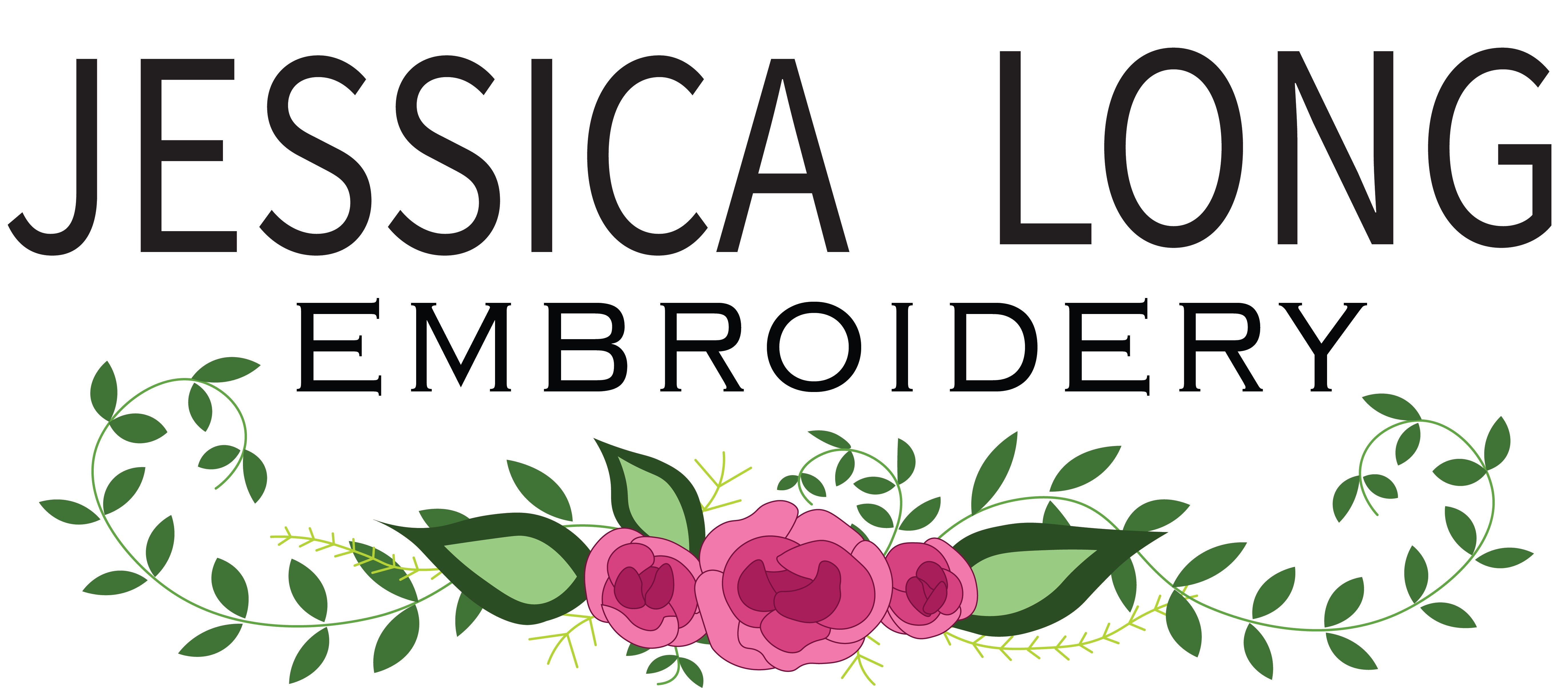Long and short stitch, also known as "thread-painting" or "needle-painting" is a challenging yet rewarding embroidery skill. Use this stitch to create color gradations and shading or highlighting to give your subjects a three dimensional look. Here are a few key ideas I have discovered through many hours of long and short stitching.
Let's start with a refresher of basic long and short stitch.
 Row 1 (A) is filled with alternating long and short stitches. The remaining rows (B - D) are filled by piercing through the previous row, creating overlap. Because the original row is staggered, all remaining rows will also have staggering which helps create a blended look between colors. When possible pierce the stitch in the previous row (like a split stitch), but if your stitch ends up between stitches of the previous row that's okay, too. For the final row (D) you will use compensating stitches to line up with the edge of your shape.
Row 1 (A) is filled with alternating long and short stitches. The remaining rows (B - D) are filled by piercing through the previous row, creating overlap. Because the original row is staggered, all remaining rows will also have staggering which helps create a blended look between colors. When possible pierce the stitch in the previous row (like a split stitch), but if your stitch ends up between stitches of the previous row that's okay, too. For the final row (D) you will use compensating stitches to line up with the edge of your shape.
Now let's dive into the five keys!

The first key is about varying your stitch length to help blend colors. A blocky, perfectly measured long and short stitch is lovely, but by creating more variety in your stitch length (add extra long and extra short stitches) the transition between colors will look more smooth and realistic.

The second key is pretty obvious, echoing what we learned about using different numbers of strands when practicing satin stitch. A thicker strand of floss will create more texture, which may be distracting or may be exactly the look you are going for. It's like coloring with a fine tipped pen versus a fat sharpie marker.

The more steps between two colors, the smoother your transition will be. Your work will be more realistic as you increase the number of colors you use and you decrease the difference in hue between those colors. And the more time it will take to complete your project! Be prepared to spend hours on a thread painting. Unfortunately there are no short cuts here.

Play with your stitch direction. Sometimes keeping your stitches parallel with your shape is perfect, but it can be interesting to see the variation created when you mix it up. Stitch direction can help add dimension to shapes and direct focus.

Another way to play is by making slight changes to where you transition from one color to another. Curve your shading for more realism, giving your objects a more three dimensional look. If you are using a model be sure to pay attention to the actual shadows. It's likely that they do something more interesting than following along a straight line.
That's it! Do you have any key points to add? Let me know below.
Looking for a pattern or kit to try our your new needle painting skills? Try one of these:1. Hedgehog embroidery pattern
2. Anemones and Succulent embroidery pattern or kit
3. Spring wreath embroidery pattern
4. Tropical paradise embroidery pattern
5. Giraffe embroidery pattern or kit
6. Mermaid Dreams embroidery pattern or kit (coming soon)
And here's some video tutorials which include discussion on long and short stitch:
1. Hedgehog pattern video tutorial
2. Anemones and Succulent pattern video tutorial
3. NEW thread painting a ribbon using a single strand of floss. Video Link.

